
































As September arrives, the dog show calendar is filling up with exciting events and competitions, making it a bustling time for everyone in the canine world. We understand how demanding this season can be, and our goal is to provide you with a relaxing and enriching reading experience amidst the hustle and bustle. This month, we have curated an exceptional edition filled with insightful articles and inspiring stories to accompany you during your well-deserved breaks.
We are thrilled to bring you an exclusive interview with Yvonne Savard, a distinguished figure in the world of dog judging. Yvonne has traveled extensively, judging shows and observing canine excellence across the globe. In our feature, she offers a captivating glimpse into her experiences and the nuances of international judging. Additionally, Yvonne shares the remarkable success of her breeding program, highlighting her dedication and the exceptional dogs she has helped bring into the world. Her story is a testament to the passion and expertise that drive the best in the breed.
In this edition, we also have the pleasure of presenting an interview with Caitlin O’Brian Duke, who provides a fascinating look into her breeding program for beautiful Labradors. Caitlin’s insights into her breeding practices, coupled with her travels to some of the largest dog shows in the USA, offer a unique perspective on the dedication required to excel in the competitive world of dog shows. Her journey is not only inspiring but also a valuable resource for those interested in the finer details of breeding and showmanship.
For those of you planning a visit to Lloydminster, we’ve included a comprehensive Travel Tips article. This guide is designed to help you make the most of your trip, with recommendations on must-see attractions and the best places to eat. Whether you’re a local or just passing through, our tips will ensure you experience the best of what Lloydminster has to offer.
We hope you find this September edition both enjoyable and informative. As you navigate through the busy dog show season, take some time to savor these articles and let them provide a moment of relaxation and inspiration. Thank you for being a part of our community, and as always, we wish you safe trav-


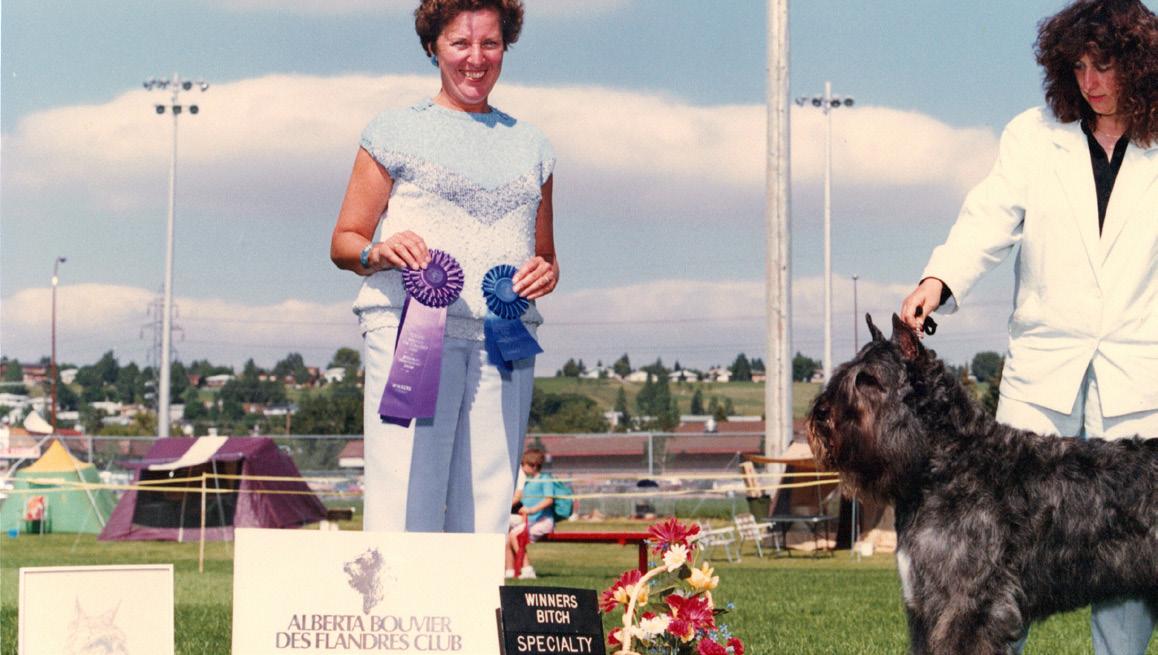

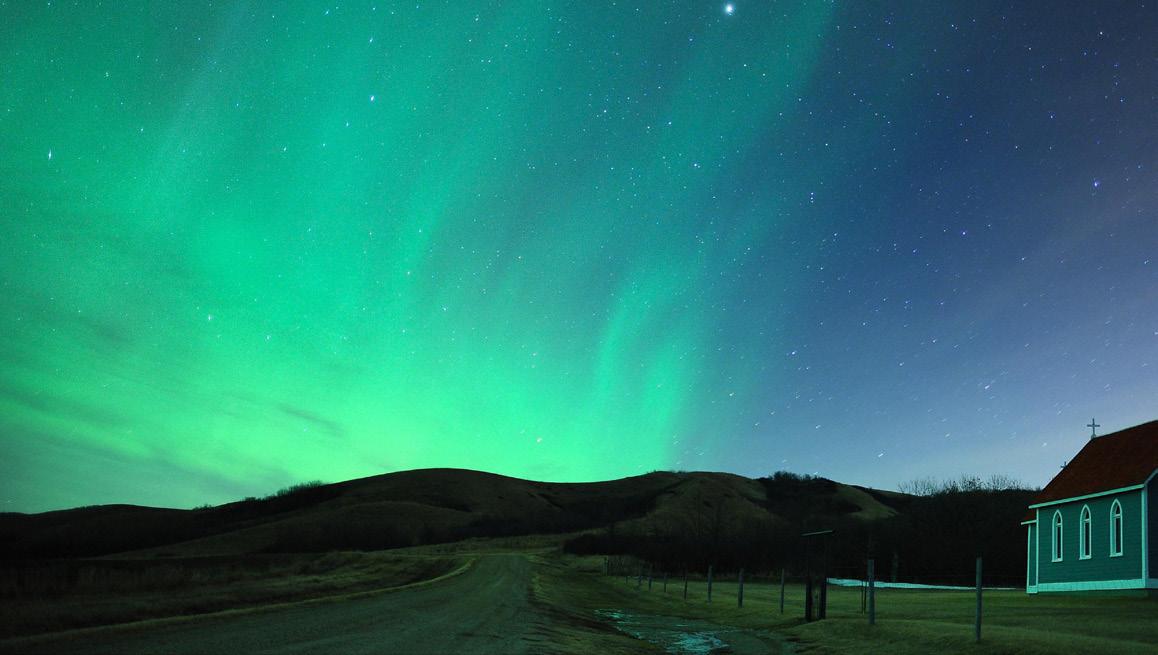
30 40 50 56





SASKATCHEWAN
CALENDAR
SEPTEMBER/OCTOBER


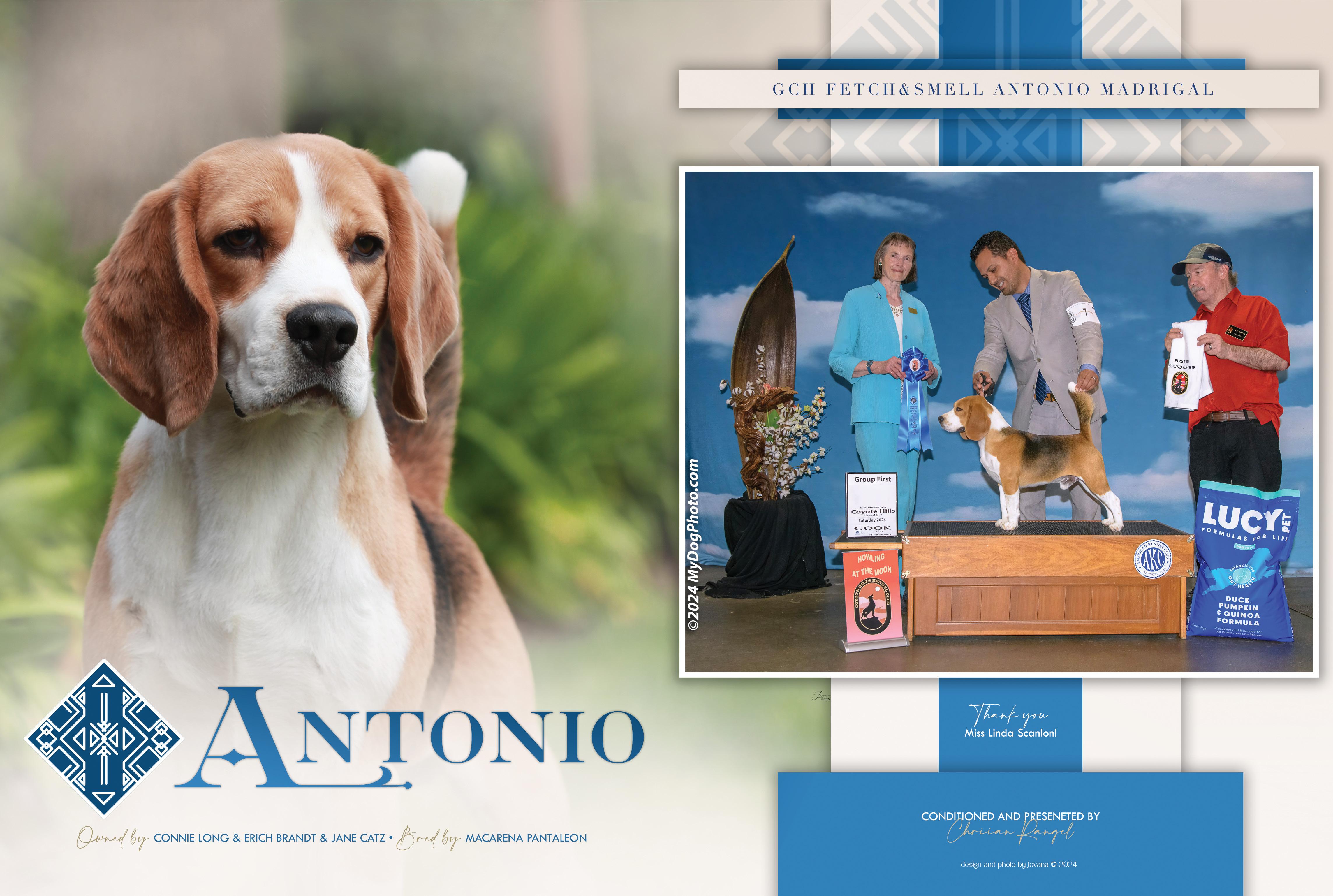










How did your journey with dogs begin? What inspired you to start breeding and showing dogs, and eventually become a judge? We’d love to hear about the experiences and motivations that shaped your path in the world of dogs.
My parents were animal lovers, and we always had dogs of various breeds and crosses, but it was when we got a purebred German Shepherd, and my girlfriend got a Great Dane, that things changed. We discovered a sanctioned match at our local mall and took both dogs there. Unfortunately, my German Shepherd was a little too protective of me and challenged the judge, which, of course, got him excused.
I was very much into horses—Barrel and Dres-

sage—when I met our new neighbors, Dr. Erik and Carolyn Houttuin. They bought the boarding kennel down the street; they had a shepherd cross named Freya at the time. Erik always wanted Bouviers, as he had seen many of them in Holland and Indonesia, where he grew up. They took me under their wing, knowing my love for dogs and horses. I knew nothing about Bouviers; I had never heard of them before. Together, we learned and ventured into the wonderful world of Bouviers. We met with many long-time breeders, including Paul and Pauline DeRyke (De Bolshoy), David Westra (Hollandia), Andy Prinsen (Working and guard dogs mostly), and many more Bouvier breeders. Flanders Field Kennels LTD was born. I did the showing and training of the Bouviers. My first true venture into a show ring was with a black Bouvier in juniors. My first show was the Sportsman Dog Show in Toronto, Ontario; this was a 7-day benched show. I showed as a Junior and in the regular class with a big black Bouvier named Shane, which was in 1969. Our first breeding Bouvier bitch was Ch. Fina de Bolshoy, a very old-style harsh, short-coated bitch we acquired from Paul DeRyke. I fell in love with the breed because you really need to understand them to love them. Every day was a new learning experience. The Houttuins also ended up getting into horses, so I had the best of both worlds—dogs and horses. I showed many Bouviers to Canadian Championships. I won my first Group in 1973 when it was still the Working Group with Am Can Ch. Goof of Flanders Field. I showed many of the Flanders
Field Bouviers from 1969 to 1975, and my first American Specialty was in 1975, where I won Best of Winners with Am. Can. Ch. Bronville’s Darren. During this time, Erik sent me out to a Bouvier Specialty in British Columbia with Am. Can. Ch. Hollandia’s First Choice, where we won the specialty. I fell in love with British Columbia and eventually moved from Ontario, via Cuernavaca, Mexico, Newport Beach, California, and eventually landed in Vancouver, BC, in 1976. Once settled in BC, Erik sent me Bouviers to show. I also owned and showed Dobermans, Irish Setters, German Shepherds, and had Pekes. In the West, I worked in a kennel that bred Dobermans and helped professional handler Jim Campbell. I learned about different breeds through him and others. I took a break from shows and focused on my education, but because of a phone call I received in early 1980 from a well-known handler of Bouviers from back east, Garry MacDonald, telling me he had an outstanding Bouvier puppy for me, I started back seriously in the breed. He didn’t lie; I showed Bandit here in the West to the chagrin of others, especially because I was an unknown factor in Bouviers in the West. I was a new grad with little money, so I built a partnership with his breeder, William Miller, and my friend Doris Elbe. Bandit was 4 years old when he went back to Garry to be campaigned, and he finished the year as Top Dog All Breeds in 1984. The following year, owners traveled with the top dogs from all the groups to various exhibitions on behalf of the Top Dog sponsors. It was very
interesting and a wonderful learning experience; I met so many wonderful dog people. In 1986, I had my first owner-handled BIS with Bandit, where the late Walter Pinsker sent us to the BIS line—a very special memory. I began breeding under the prefix “Barbu,” and over the years also under “JBB” and “BarJen.” In 1995, I was asked to judge sweeps at the American National. I loved it. In 1996, I started on the path to becoming a judge. I set a goal to attain my all-breed judging credentials to give back to the sport as well as continue with purebred dogs once I retired from my everyday profession. Dogs are my passion. I achieved my goal in 2017, and I am retiring from regular work on August 30, 2024, to focus more on my judging career. I no longer own Bouviers, as my aging body cannot handle the grooming or showing of them, so I downsized to my current breed, Affenpinschers. This breed is a Bouvier at a reduced size. My current dog, whom I purchased as a pup in 2019 just before COVID hit, is from V. Tani Kazari Kennels in the Netherlands. He has been my rock, made me laugh every day, and has proven himself to be quite a show dog. He earned his American and Canadian titles, then went off to Europe, where he earned multiple BISs and was awarded BIS #3 at the World Dog Show in Geneva ’23. I also have a little girl Affen, who I like to call my very, very, very expensive pet, but I love her dearly.
Could you tell us more about your breeding program? What would you consider the highlights of your breeding career so far?
YVONNE SAVARD

Over the years, I have had the fortune of learning and working with many wonderful breeders. Some had different visions and goals for their Bouviers; however, listening to and understanding their points of view taught me that everyone has something to share, and we all have the same passion: we love our Bouviers. In the early years, Paul and Pauline DeRyke (Bolshoy), Pat Miller (Blandford), Claire McLean (Dewall), David Westra (Hollandia), Andy Prinsen (Frisia Kennels), Dr. Pedersen (Bibarcy), Jorge and Shirley Landa (Delanda), and Christine Paquette (Quiche) all gave me food for thought. The sharing of Bouvier stories and breeding information continues to be a learning experience. I have been fortunate to work with several good breeders over the years, my Bouvier family, including Ray Waterman (Jenarae), Doug and Michaelann Johnson
(Rocheuse), Mark & Patte Klecan (Bedrock), Pat Kaartinen (Amadee), William Miller (Glennmiller), Serge Bilodeau (Boyero), and Janice and Sandra Brind (Brocade). It takes a village!
In terms of breeding planning, I am a firm believer that it is the bitches that count the most; you must start with strong bitches. I look at their health profiles and those of their ancestors as well, then make informed decisions. I study the pedigrees and the percentage of inbreeding in the lines. I look beyond this breeding to ensure I leave options for the next generations. They must complement each other in type and, of course, have a sound, strong temperament. I do not want to double up on a negative, so I am very critical of the bitch I use to breed and consider, “What would I change?” And if using XX Sire, what may I gain and what may I lose? Fronts are very important to me, so I try not to compromise on this. Breeding is give and take; we can only hope for that puppy that can give us all or at least some of it. I’m sure many breeders have planned that perfect match only to be disappointed because they did not turn out as imagined. I can do all the planning I want, but genetics rules. The result I strive for is a happy, healthy puppy that conforms as closely as possible to the ideal expressed in the Bouvier des Flandres breed standard.
Highlights of my breeding career include winning BIS at Palm Springs twice: 2016 with CAN GCHG AM GCHS Ch. Brocade Lil Deuce Coupe BarJen, and 2019 with GCHG Ch. JBB’s Turn the Tables. Littermates who are both BIS win-
ners include USA BIS AM. CAN. CH Barbu’s Top of the Heap and BIS BISS AM. CAN. CH Barbu’s Simulation One - ROM. Littermates also won the Bred by Exhibitor class at the American National in Boston in 1988: AM. CAN CH. Barbu’s Diamond in the Rough and his brother AM. CAN. CH Barbu’s Decisionmaker of Amadee. AM. GCH. CAN. CH. Barbu Jenarae Ruffian won Best of Breed at Westminster in 2013. I have also won BW at the American National multiple times. Being recognized as a breeder of merit with the AKC and honored on the ABdFC Top 20 Outstanding Breeder Honor Roll has been a significant achievement.
Which dog do you consider the most successful in your career, and what makes them stand out to you?
CAN GCHG AM GCHS Ch. Brocade Lil Deuce Coupe—In the U.S., he was Number 1 Breed and All Breed in 2015. He was a fawn; in the 40 years of breeding Bouviers, I had never produced a fawn before and always said my girls were fawn killers. Cooper was one of my last co-breedings. He was a singleton and fawn, not an easy color to win with, as under FCI rules

YVONNE
it is a disqualification, which is unfortunate. BIS BISS AM. CAN. CH Barbu’s Simulation One— she was not a big girl but she was mighty. I thank her co-owner, Patte Klecan, for keeping her promise and showing her; she achieved remarkable success in her show career. It started at the American Specialty in 2003, where she was RWB from the 9-12 puppy class under Michelle Billings, handled by Patte. She went on to win BIS, BISS, and Award of Merit at Westminster, and was a great producer.
Having competed in and won awards at the Bouvier National multiple times, what changes have you observed in the breed over the years across the continent?
Over the years, I have seen some changes. The Bouvier in the conformation ring has become more glamorous. The heads have changed from longer muzzles to shorter ones. The coats have shifted from a shorter, coarse outer coat with less undercoat to the now dense, profuse body coat and leg furnishings. The structure of the front and rear assemblies has also changed somewhat. Size has fluctuated—first too big, then heading toward too small. In terms of temperament, we used to have dogs that were tough as nails, but we also had ones that required more attention; it all depended on their background and upbringing. Today, I see Bouviers that are softer in temperament—not timid, but more needy, with some exhibiting a “Golden Retriever” jovial nature, living together in a pack environment. This works well for modern families, but it is not a true Bouvier character.
However, it does make keeping more than two Bouviers together easier.
Changes have also occurred with the addition of health testing prior to breeding. This is necessary, but results should be used wisely, as all dogs have genetic faults, and overreaction can narrow the gene pool too much. When you change structure, you need to compensate for these changes elsewhere. Shorter muzzles, from 50/50 to 1/3 to 2/3, have created bite issues that we still see to some degree today. A profuse coat looks beautiful but can also create a grooming nightmare for pet owners. The change in outer appearance has made the breed more competitive at the group level. The structure of fronts and rears has created a more “generic” looking Bouvier, with some loss of breed origin to achieve a more common outline that judges are comfortable with. The change in head carriage, due to shorter upper arms or lack of good return of upper arm and/or a more angulated rear assembly, drives a front that compensates by lifting the head well back and up to maintain balance and allow forward motion. Excessive speed provides a look of groundcovering action when, in fact, the dog is working very hard and not moving efficiently. Are these changes good? In my humble opinion, not necessarily. We are losing breed-specific type; Bouviers do not move like German Shepherds or Standard Poodles. It is (or was) a working breed meant to work long days with an owner pulling a cart at a reasonable speed (not racing) or you would have spilled milk. They worked with cattle—cutting and dodging, mov-
ing the herd with body blocks, heads almost level with the top line, short bursts of speed, and of reasonable size and blocky solid build so the cow felt it was hit by a formidable source. They are family protectors, bold and of stable character. That said, this does not mean they need to be ugly with no breed type to work. However, we spend too much time grooming and forget about the basic structure required for this breed’s origin and demands. When you see the Bouviers today, can you imagine them doing a full day’s work in the field with cattle, pulling a cart, or standing their ground with that “prudently bold” look stating, “OK…come on, make my day”? Some absolutely… others, not so much!
Having judged across the continent, what are your favorite shows to attend as a judge and which ones do you enjoy most as an exhibitor?
Judging a specialty is always an honor, and I have judged various breed specialties. Judging the American National Bouvier Specialty in 2007 was amazing. Believe it or not, judging German Shepherd specialties is always fun. The Rose City Classic was tiring but great, as the classes have good numbers and many choices of quality dogs. As an exhibitor, Nationals were a must-attend; it’s where you can visualize breeding prospects. Palm Springs is a great show and enjoyable, although costly, as are most these days. I enjoy all the shows I judge; if I didn’t, why would I do it?
What do you wish every judge knew about the



YVONNE SAVARD
Bouviers before assessing them in the ring?
Bouviers are not just a silhouette breed, nor are they strictly a head breed. Judges should focus more on structure as it relates to the original purpose of the Bouvier breed. Overall silhouette is important to determine general breed type, but being a coated breed, do not focus on silhouette alone. Get your hands under the coat to


feel and understand what is there.
As a herding dog, the Bouvier is a movement breed. They must cover ground easily with conservative energy and no wasted motion. I notice that too many dogs are steep in the upper arm and lacking the desired “slightly greater than a 90-degree angle of the shoulder,” and are still being awarded.
Bouviers should have endurance, not excessive speed. There is no need to race a Bouvier in the ring; they should cover ground at an easy pace.
Judges can only judge what is presented to them. Unfortunately, more and more Bouviers are becoming generic in breed type, thereby losing some of the important qualities of the breed.
Remember, Bouviers are a square breed and should move with purpose, have good reach and drive, with moderate front and rear angulation, good return of the upper arm, and no front lift or rear kick.
What do you feel are some of the biggest differences in breeds shown outside of North America? This can be general or breed-specific.
The first significant change has been the cropping and docking ban, which is now in effect pretty much everywhere except the USA. I am comfortable with it now, as the set of ears and tail are the primary concern, not their length. North America is often criticized for overgrooming; however, having attended a few
World Dog Shows, I was shocked to see that the majority of Bouviers were clipped into a silhouette with no coarse coat to be found. This underscores the importance of a good handson examination. Many breeds were excessively groomed; I watched a Newfoundland being completely hand-scissored.
Other breeds are not as extensively groomed as in North America; the Shih Tzu, for example, comes to mind. Many European countries have very strict health rules and regulations regarding what can be used for collars and grooming equipment—no sprays, only water is allowed, and no grooming nooses on tables. This was quite odd. Some methods of showing dogs are less controlled regarding double or quadruple handling, and the use of toys and balls, as well as calling dogs’ names. The Rottweiler ring was an eye-opener. Boxers and Dobermans in Europe are heavier and not as elegant as those in the U.S.
What three dogs from the past do you wish you could have judged or owned?
There are many great dogs:
Affenpinscher: GCH Banana Joe V. Tani Kazari… the reason I have Affenpinschers.German Shepherd: Ch. Altana’s Mystique
Irish Water Spaniel: Ch. Oak Tree’s Irishtocrat
The purpose of dog showing was (and should still be) to evaluate and “show off” breeding stock. Do you think for some breeders/owners it is becoming more about rib-
Yes, it has created bullies, entitlement, and shifted the importance from a dog’s quality and its contribution to the betterment of the breed to how many points, ribbons, or where it ranks in the standings. In recent years, the number of dogs in the ring has decreased significantly. The lack of finances to support this sport is generally the biggest factor. To be at the top of the rankings requires travel, advertising, and substantial funding to support the race to be number one in your breed. Unfortunately, this leaves many good dogs in the backyard because most owners and breeders cannot afford the time away themselves or do not have the means to hire a professional handler. Gone are the days of attending a dog show to showcase what a kennel has bred. Specialties are best for this, so many breeders attend only their breed specialties and forgo the weekly dog shows. In Europe, it is about the prestige of the show. I was impressed to learn that in some shows, they offer a Supreme BIS title, and out of courtesy, if a handler’s dog wins BIS on the first day, that dog is not shown the rest of the weekend, so each day a different dog wins BIS. On the last day, all the BIS dogs from all-breed, specialty, or limited entry shows compete against each other for the Supreme BIS title. I thought it was very civil; it would never happen here.
In your observation, are there specific regions in the world where working dogs exhibit exceptional quality and strength?
Yes, certain regions around the world are known
for producing working dogs with exceptional quality, strength, and specialized skills. These regions often have a long history and tradition of breeding dogs for specific tasks, leading to the development of highly capable working dog breeds. Some of these regions include:
Germany: Breeds: German Shepherd, Rottweiler, Doberman Pinscher. Germany is renowned for its working dogs, particularly in roles like police work, search and rescue, and protection. The German Shepherd is famous worldwide for its intelligence, strength, and versatility.
Belgium: Breeds: Belgian Malinois, Belgian Tervuren. The Belgian Malinois is highly regarded in military and police work for its agility, speed, and intelligence. This breed is often chosen for elite units due to its exceptional performance in demanding tasks.
In the show ring, various countries have their own “type.” What you see in Europe may not necessarily win in the USA. For example, Boxers, Dobermans, and, to some degree, Rottweilers are bigger and more muscular in Europe compared to the USA and would not win here, just as the stylish Doberman or Boxer might not do well over there. Shelties are very different, and Europe does not favor the American style, to the point that they want to split the breed into American Shetland Sheepdog and Shetland Sheepdog. FCI countries focus more on the original working ability of these breeds, while Canada and the USA have developed “show dogs.”
Who are some judges that have significantly influenced your decision to judge and your approach to judging? What qualities do you admire most in their judging style?
Several judges have influenced my decision to judge. My veterinary background helped me understand structure, which I believe is fundamental for any judge. It benefited both my breeding program and my judging. I took my time adding various breeds, attended many AKC seminars and institutions, went to breedspecific shows like Montgomery, attended many breed national specialties, and received mentorship from parent club breed experts. Judges such as Virginia Lyne are extremely knowledgeable, and I always enjoyed her seminars about judging. I admired the decisiveness of Anne Rogers Clark, who made quick decisions after examination; listening to her was very rewarding. Miss Dorothy M. MacDonald was a walking encyclopedia. Leslie Rogers, Skip Stanbridge, and many additional judges who are no longer with us also had a significant impact. There were judges whose style made me say, “If I ever judge like that, kick me hard!” I love judging; most of the time, exhibitors are wonderful, and I love dogs! I enjoy looking for the next star. If you don’t enjoy it, don’t do it! I am always learning; if I learn one new thing every day, it’s a great day. I enjoy attending shows and sitting ringside all day, watching. You can never know it all!
What do you like to do most to relax and unwind?
Good question. Between work and judging, I am not home much. So, when I do have a weekend to myself, my garden is my solitude (flowers). My dad was a horticulturist, so I inherited this interest from him. He grew the most beautiful orchids in Ontario, which flourished everywhere—inside, outside, hanging from trees. Orchids and I do not get along; every one he gave me I killed. Other plants and flowers are no problem. My favorite was his black tulips (I am of Dutch descent). Oh, and of course, enjoying a nice wine on the patio, looking at my garden with my dog(s) by my side.
What is your favorite meal to make and which one are you always excited to order in a restaurant?
I’m not much of a cook or baker; I cook mainly out of necessity. I’m a meat and veggies person, so I often prepare salads, lots of chicken, and with the discovery of the air fryer, I mostly stick to dishes that can be made in it. I’m not a fan of fast food. When it comes to a good meal, I enjoy Alaska Halibut with any veggies (no rice or potatoes), Prime Rib, certain seafoods like Atlantic Lobster and Alaska King Crab—always paired with a good wine. I must admit, I’m a bit of a wine snob!
Is there a particular place in the world you dream of visiting, or a specific show you aspire to judge?
There are many places I’d love to visit now that I’m retiring and can make them happen.

I’ve told my boss that I’m too busy to work, so goodbye! I can now accept invitations to judge in interesting places that I previously couldn’t due to limited holidays. I’d love to visit Japan and South Africa, among many other locations. Judging at the Dutch Bouvier Club Specialty and Affenpinschers in Great Britain (because they have so many) would be fantastic. Of course, judging something at Westminster is always a wish. I also want to do a cruise in the Mediterranean.
Lastly, amidst your judging experiences, have there been any humorous or lighthearted moments that stand out and you’d be willing to share?
YVONNE


One memorable moment was when I was judging in Ireland and was assigned to Yorkshire Terriers (FCI Group 3 Terriers). All the exhibitors came in with these decorated red velvet boxes, which they placed down and then stacked their dogs on top of them. My ring steward was having a good laugh as he noticed my confused expression. He explained that this was a tradition I wasn’t aware of. At the end of the class, when I needed to choose a reserve winner, I asked the exhibitors not to bring in their boxes. You should have seen their faces; it was quite a sight! It was a good laugh, and I’m proud to say that my Group 9 winner went on to win Best in Show.


How did you first become involved with dogs, and what sparked your interest in the sport of dog shows? When did you start breeding, and could you share the story behind your prefix and its significance?
I have always been an animal lover for as long as I can remember. However, my dad didn’t share my love of dogs, and I never had a dog of my own until I moved out of the house for university. That said, I attended my first local dog show at 8 years old after a cousin told me she thought I would like it. I entered Junior Handling with a local Miniature Poodle and was hooked. I attended that local show every year, always showing dogs for other people. The owner of that Miniature Poodle, Peggy Saltman, hired me to work in her kennel with her Mini Poodles and Welsh Springer Spaniels when I was 12. That same year, I also became kennel help for Faye Andrews of Dashwood West Highland White Terriers. I learned a lot from both of these women, and I am now actually President of the All Breed Club that hosted that annual dog show where I got my start.
I started breeding in 2011 with Patrick Coady. Our prefix is GoFetch. GoFetch is significant for us because our dogs, especially our foundation bitch, love to retrieve and play fetch at the cabin on the lake. Our logo is actually an adaptation of our foundation bitch launching off the dock there to get a ball.
Which dogs do you consider the foundation of your breeding program?
Our foundation bitch was CAN CH. Beechcroft Jersey Star. She was a MBISS AM GCH. Beechcroft Study’s Top Secret daughter. Every bitch that we have goes back to her.
What do you consider your greatest achievement as a breeder?
Our greatest achievement as a breeder has definitely been being awarded and recognized at The Labrador Retriever Club of Potomac
Spring Specialty several times. It is the most prestigious specialty show for Labrador Retrievers in the world, drawing entries from around the globe. Since 2019, we have been awarded Select Dog, Winner of the Top 20, and Winners Bitch twice on dogs we bred and co-own. To be recognized on that stage once is amazing; to achieve it three times is a dream come true.
Who has been your greatest influence in breeding and in what way?
Fabian Negron of Gallivant Labradors in PA, without a doubt. Fabian has a gift for evaluating dogs, reading pedigrees, and knowing which dog to bring to which bitch. He can condition, train, and present a Labrador like no one else and is always happy to share his knowledge with those wanting to learn. Fabian has developed a line of consistent, beautiful Labradors, and we are fortunate that he has shared some of those

dogs with us. His work ethic is admirable, and his success speaks for itself. Seeing his work inspires a desire to produce quality, consistent dogs.
Are there any other people who have been instrumental in your career as a breeder that you have looked up to and admired?
Aside from Fabian, as mentioned above, I would have to say Faye Andrews. I started working for Faye when I was 12 years old. She taught me the basics of animal husbandry, helped me become a better handler, and got me involved with the local kennel club.
As a breeder, Faye has always bred, owned, and shown beautiful dogs. Her dogs are always impeccably groomed, and she has consistently been competitive with whatever she has in the ring. She has an eye for a dog—regardless of breed—and is someone I trust to give me an honest evaluation of a dog or puppy. Her advice is something I take very seriously. I firmly believe I wouldn’t be showing or breeding dogs today without her guidance, especially as a teenager.
Also instrumental in my career as a breeder is Patrick Coady. Pat and I co-breed together at GoFetch, and without him, none of our successes would be possible. It’s wonderful to have someone to share the journey with, who shares your passion and has common goals.
What is your breeding policy? Do you work with other kennels, have joint ownerships, or rent dogs in or from other kennels? Or do you prefer to have your stud dogs for yourself?
We work closely with Fabian Negron of Gallivant Labradors. We frequently co-own dogs and lease bitches from one another. We do not often keep males, but when we do, they stand at stud to approved bitches. We typically keep or place our pick puppies in guardian homes.
What kind of selection do you prefer in your breeding program: line breeding, inbreeding, or out-crossing?
We prefer to line breed because that has worked well for us. However, we occasionally outcross with the plan to go back in tighter in the next generation.
Are there any specific stud dogs or brood bitches in your variety, in your country, or globally, that you think have had an important impact on your variety, and if so, why?
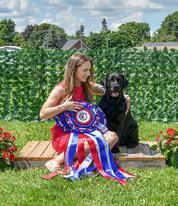

Currently, I would say MBISS GCH. Lakeside Memoir of Gallivant. He is an American dog who has significantly contributed to the breed as a stud dog. He is behind many of the topwinning dogs over the past several years and produces some very nice puppies.
In the past, it would be Ch. Dickendall Arnold, whose grandsire was Am/Eng Sh Ch Receiver of Cranspire. Arnold was such a great producer that he is behind many dogs. He improved our breed as a whole.
In your perspective, what is the most pressing issue facing the breed today that needs improvement? If I had to choose one thing to improve upon, it would be to add more leg
under our dogs. I think that the three hallmarks of our breed—head, coat, and tail—combined with sound movement, are aspects we need to protect and always strive to produce.
Please mention 3 Labradors which are not owned, bred, or shown by yourself that you particularly admired, and tell us what you most admired about each.
As mentioned above, MBISS GCH. Lakeside Memoir of Gallivant. I just love this dog. He won the Potomac Labrador Specialty this past year for the second time from the Veterans class. Not only is he a beautiful dog, but he has also done so much for the breed through his offspring. He is an effortless, beautiful mover with a solid topline, a tail straight off his back, and a soft expression with a pleasing head. He has substance but is not overdone.
Am/Can Eng SH CH ClearCreek Bonaventure Windjammer JH – another Potomac Labrador Specialty winner. Windy was a beautiful black bitch who was not only successful in the show ring but also capable of working, as evidenced by her JH. I remember watching her at the Garden the year she won the breed at Westminster and thinking how beautiful she was.
MBISS GCH. Beechcroft Study’s Top Secret. He was the sire of our foundation bitch. He had a beautiful topline and tail and was just striking. When I first began looking for a Labrador, I compared every dog to him. He was what I wanted.
Not a specific dog, but a kennel: Carol Heidl of
Tabatha Labradors. She had such a classic and consistent kennel type. Her bitches were beautiful, and she produced cookie-cutter dogs. She had a very distinct and recognizable type.
What is the most important point you would like a judge of your breed to be aware of?
Labradors are beautiful movers, but they are not flashy movers. They should move like they swim, with their heads level and tails straight off their backs. It’s also important to note that a Labrador in full, correct coat can appear heavier than they actually are. Their coat wraps around their body and gives the illusion of fullness. I have often been asked if one of our dogs has lost or gained weight based on how in or out of coat they are.
If you were in charge of everything regarding dog shows, what change would you make
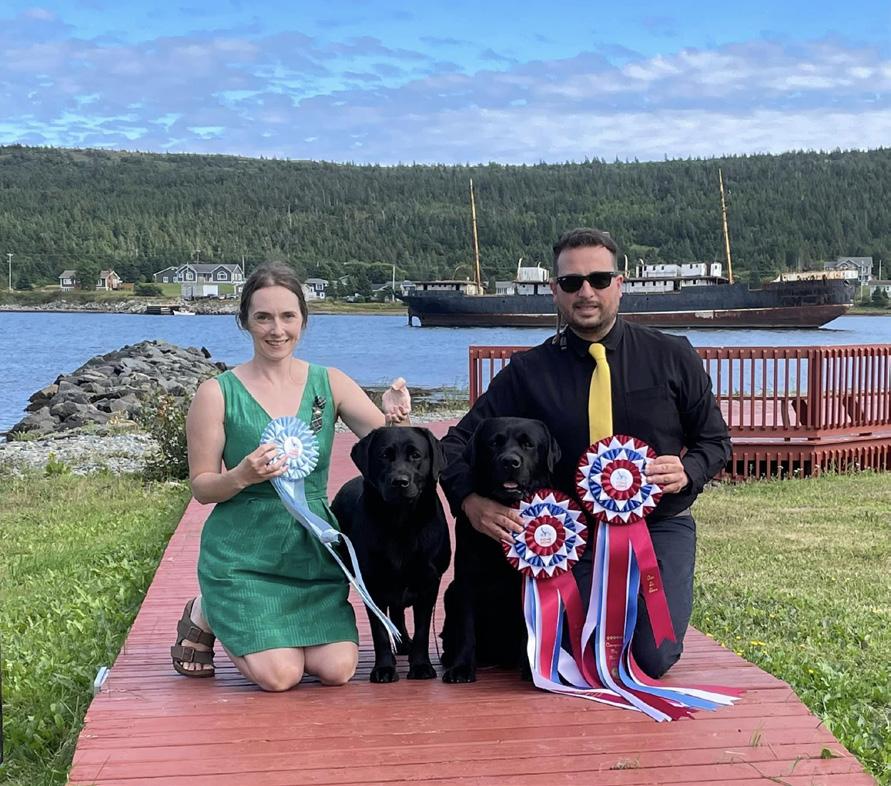
That’s a tough one. I would make it easier for good dog people to become judges.
What would be the most important single piece of advice you would give to all serious young breeders?
Get involved with a club—an All Breed Club or a Specialty Club—and find a good mentor. Be willing to learn. Watch them in their setup, observe them while they groom and prepare for the ring, and see how they interact with their dogs and raise them. Ask questions, write down or record the answers. Always keep learning and try to attend as many Specialties as you can, not just to present your dogs to the fancy, but to learn from other breeders and exhibitors.



Nestled in the heart of Canada, Saskatchewan is a province often overlooked by many travelers. However, those who venture into this diverse region are rewarded with a wealth of experiences that blend stunning landscapes, rich culture, and unique adventures. Whether you’re drawn by the vast prairies, tranquil lakes, or vibrant cities, Saskatchewan has something for every traveler. Here’s a comprehensive guide to help you make the most of your trip to this captivating province.
Saskatchewan is a province of contrasts. From the flat plains of the south to the lush forests and rugged terrain of the north, its landscape is as varied as its climate. The province is characterized by its rich agricultural heritage, vibrant Indigenous cultures, and a strong sense of community. With a population of just over 1 million, it offers a blend of urban amenities and pristine natural beauty.
Regina: The capital city of Saskatchewan, Regina is known for its cultural attractions, including the Royal Saskatchewan Museum, the Saskatchewan Science Centre, and the historic Wascana Centre. Don’t miss the opportunity to visit the Saskatchewan Legislative Building, an architectural gem with impressive gardens.
Saskatoon: This vibrant city on the banks of the South Saskatchewan River offers a mix of cultural and outdoor activities. Explore the Broadway District, home to unique shops, restaurants, and theaters. The Remai Modern art gallery and the Saskatoon Forestry Farm Park & Zoo are also worth visiting.
Prince Albert National Park: For nature lovers, this national park offers diverse landscapes,
including forests, lakes, and wetlands. It’s ideal for hiking, wildlife viewing, and canoeing. The park is also home to the historic town of Waskesiu Lake, a charming spot with various accommodation options.
Grasslands National Park: Located in the southwestern part of the province, Grasslands National Park showcases the beauty of the prairie landscape. It’s a haven for wildlife enthusiasts, with opportunities to see bison, pronghorn antelope, and a variety of bird species. The park’s unique geological formations and wideopen spaces are perfect for photography.
The Churchill River: This is a must-visit destination for those interested in adventure. The Churchill River system offers fantastic opportunities for canoeing, kayaking, and fishing. The scenic beauty and tranquility of the river make it a memorable experience.
Hiking and Biking: Saskatchewan’s diverse landscapes provide numerous hiking and biking trails. The Boreal Trail in Prince Albert National Park and the trails around the Qu’Appelle Valley are excellent for exploring the natural beauty of the province.
Fishing and Boating: With thousands of lakes and rivers, Saskatchewan is a haven for anglers and boaters. Lake Diefenbaker, the largest lake in the province, is particularly popular for its
fishing opportunities.
Camping: The province boasts several campgrounds and parks. Whether you prefer a back-to-nature experience or a more comfortable cabin stay, Saskatchewan’s campgrounds cater to all preferences.
Winter Sports: For winter enthusiasts, Saskatchewan offers excellent cross-country skiing, snowshoeing, and ice fishing opportunities. The province’s cold climate ensures plenty of snow and ice, creating ideal conditions for these activities.
Indigenous Culture: Saskatchewan is home to several Indigenous communities, each with its own unique traditions and cultures. Visitors can learn about Indigenous history and art at various cultural centers, such as the Wanuskewin Heritage Park near Saskatoon.
Festivals and Events: Throughout the year, Saskatchewan hosts a variety of festivals and events. The Regina Folk Festival, the Saskatoon International Film Festival, and the Meadow
Lake Music Festival are just a few examples of the vibrant cultural scene.
Local Cuisine: Saskatchewan’s culinary scene reflects its agricultural roots. Don’t miss the chance to try local specialties such as bison burgers, Saskatoon berries, and farm-fresh produce. Many restaurants and farmers’ markets offer a taste of the province’s rich food culture.
Saskatchewan, with its vast landscapes, rich cultural heritage, and array of outdoor activities, offers a unique and rewarding travel experience. Whether you’re exploring the vibrant cities, trekking through national parks, or immersing yourself in local culture, the province has something to captivate every traveler. By planning ahead and embracing the province’s diverse offerings, you’ll discover why Saskatchewan deserves a spot on your travel itinerary. Happy travels!
Spice Hut Indian Cuisine www. spicehutcanada.com
Come experience the vibrant flavors of India at Spice Hut Indian Cuisine, where authentic

dishes are crafted from scratch to deliver a truly memorable dining experience. Whether you’re a seasoned aficionado of Indian cuisine or new to its rich and diverse flavors, our menu promises subtle and complex tastes that will delight your palate. Join us at Spice Hut and savor the essence of traditional Indian cooking in every bite.
Spiro’s Family Restaurant www.spiros.ca
Spiro’s, a beloved third-generation restaurant on Lloydminster’s south end, has been serving the community for over 50 years. The Kokonas
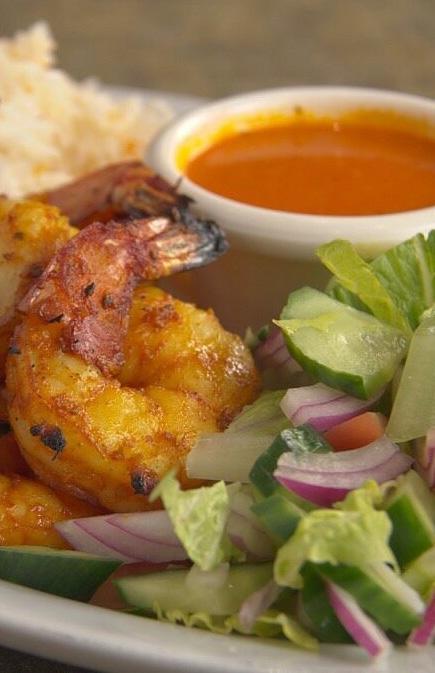
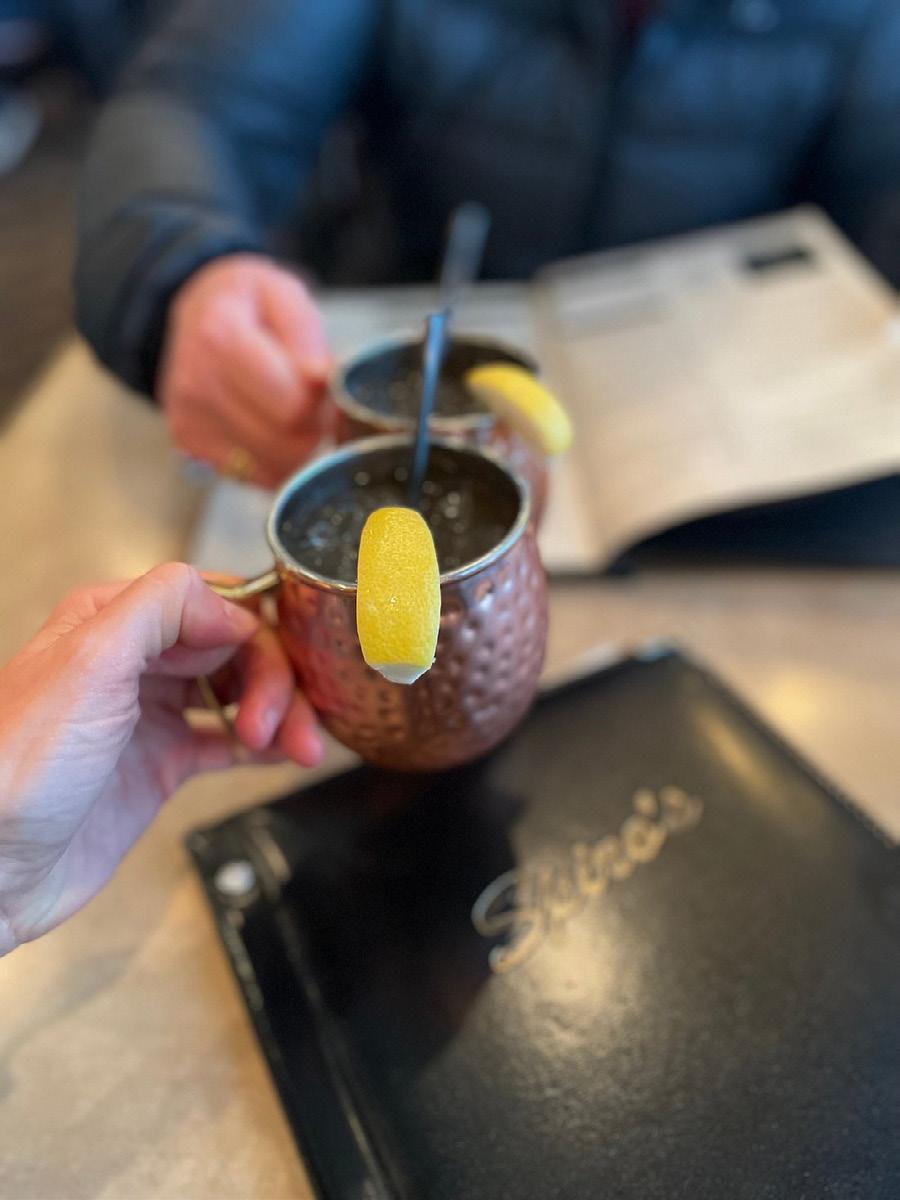
family, recognized with numerous awards including an Abex for community involvement and Business of the Year, has consistently given back through volunteer work and initiatives like the annual free Thanksgiving dinner. During the Covid-19 pandemic, Maria and Elenee used social media to inform locals about business hours and protocols, and to support other local enterprises, solidifying Spiro’s role as a community cornerstone.
Rusty’s Grille and Lounge
Rusty’s provides a fantastic dining experience for the whole family, featuring a spacious dining room and a fully stocked bar and lounge. Whether you’re looking to enjoy a meal with
loved ones or relax with a drink, Rusty’s is ready to cater to all your needs.
The Canadian Brewhouse
www. thecanadianbrewhouse.com
At The Canadian Brewhouse, our unique Canadian-themed sports bar & grill offers an extensive menu of appetizers, entrees, drinks, and nightly specials. Come on in and make yourself at home—our house is your house!


Start date. September 20, 2024 End date. September 22, 2024
Premium list. YES
Closing date. Sept, 5
Details.
3 All Breed Shows / Limited Breed Shows for Group 1, 4, 5 / 4 Obedience Trials / 6 Rally Obedience Trials
Sudbury & District Kennel Club - Coniston, Ontario
Start date. September 20, 2024 End date. September 22, 2024
Premium list. NO
Closing date. Sept, 9
Details.
6 All Breed Shows
Oromocto Kennel Club - Cross Creek, New Brunswick
Start date. September 25, 2024 End date. September 25, 2024
Premium list. YES
Closing date. Sept, 11
Details.
2 All Breed Shows
Fredericton Kennel Club - Cross Creek, New Brunswick
Start date. September 26, 2024 End date. September 26, 2024
Premium list. YES
Closing date. Sept, 11
Details. 2 All Breed Shows
Mount Cheam Canine Association - Chilliwack, BC
Start date. September 26, 2024
End date. September 29, 2024
Start date. September 27, 2024
End date. September 29, 2024
Premium list. YES
Closing date. Sept, 11
Details.
4 All Breed Shows / 3 Obedience Trials / 3 Rally Obedience Trials
Kennel Club - Cross Creek, New Brunswick
Premium list. YES
Closing date. Sept, 11
Details.
6 All Breed Shows
Burlington Kennel & Obedience Club -Grassie, Ontario
Start date. September 27, 2024
End date. September 29, 2024
Premium list. YES
Closing date. Sept, 11
Details.
3 All Breed Shows / Limited Breed Show for Groups 1, 7 & Dogs of Asia
Lloydminster Kennel & Obedience Club - Lloydminster, Saskatchewan
Start date. September 27, 2024
End date. September 29, 2024
Premium list. YES
Closing date. Sept, 11
Details.
6 All Breed Shows / 4 Obedience Trials / 4 Rally Obedience Trials
United Kennel Club - Sainte-Lazare, Quebec
Start date. October 4, 2024 End date. October 7, 2024
Premium list. no
Closing date.
Details.
4 All Breed Shows / Limited Breed Shows for Group 1, 3, 5 & 7
Abegweit Kennel Club - Charlottetown, Prince Edward Island
Start date. October 4, 2024
End date. October 6, 2024
Premium list. yes
Closing date. Sept, 23
Fraser Valley Dog Fanciers - Chilliwack, BC
Start date. October 10, 2024
End date. October 13, 2024
Premium list. YES
Closing date. Sept, 18
Details.
5 All Breed Shows
Details.
4 All Breed Shows / 4 Obedience Trials
Wine Country Kennel Club - Caledonia, Ontario
Start date. October 11, 2024
End date. October 14, 2024
Premium list. no
Closing date.
Details.
4 All Breed Shows / Limited Breed Shows for Groups 1, 3, 6 & 7
Medicine Hat Kennel Club - Medicine Hat, Alberta
Start date. October 11, 2024
End date. October 13, 2024
Premium list. no
Closing date.
Details.
3 All Breed Shows / Limited Breed Shows for Groups 1, 3 & 7
Avalon Kennel Club - St John’s, Newfoundland
Start date. October 12, 2024
End date. October 13, 2024
Premium list. YES
Closing date. Sept, 27
Details.
4 All Breed Shows / 2 Obedience Trials / 2 Rally Obedience Trials
Cobequid Dog Club - Upper Brookside, Nova Scotia
Start date. October 12, 2024
End date. October 13, 2024
Premium list. NO
Details. 4 All Breed Shows
Closing date.
Alberni Valley Kennel Club - Port Alberni, BC
Start date. October 18, 2024
End date. October 20, 2024
Premium list. NO
Details. 3 All Breed Shows
Closing date.
Battle River Canine Association - Camrose, Alberta
Start date. October 25, 2024
End date. October 27, 2024
Premium list. NO
Closing date.
Details.
3 All Breed Shows / 3 Obedience Trials / 3 Rally Obedience Trials / Scent Hurdling Trial
Belleville & District Kennel Club - Belleville, Ontario
Start date. October 25, 2024
End date. October 27, 2024
Premium list. NO
Closing date.
Details.
3 All Breed Shows / Limited Breed Shows for Group 3, 5 & 7
Start date. October 25, 2024
End date. October 26, 2024
Premium list. YES
Closing date. Oct, 9
Details.
4 All Breed Shows / 4 Obedience Trials / 4 Rally Obedience Trials
